How to Use a Ladder Stand-Off Safely?
Working at height can be risky, especially when cleaning gutters, painting walls, or repairing roof tiles. A small slip or unstable ladder can lead to serious injuries. One of the easiest ways to make these jobs safer is by using a ladder stand-off, also known as a ladder stabiliser.
In this guide, we’ll explain how to use a ladder stand-off safely for roof and gutter work, explore its benefits, and share a few professional tips to help you stay steady on every climb.
What Is a Ladder Stand-Off and Why Does It Matter
A ladder stand-off is a simple but vital attachment that fits onto the top of your ladder. It creates extra distance between the ladder and the wall, allowing it to rest on wider points instead of fragile gutters, glass, or window frames. This makes the ladder far more stable and prevents damage to the surface you’re working against.
By spreading the ladder’s weight evenly and widening its point of contact, the stand-off reduces sideways movement and gives you more freedom to work with both hands. For roofers, decorators, and window cleaners, this tool isn’t just about convenience it’s about safety and efficiency.
If you’re looking for a reliable option, try the Kirmell Universal V-Shaped Ladder Stand-Off. Built from durable aluminium, it’s ideal for use on corners, downpipes, or roof edges and features anti-slip rubber ends for maximum grip.
Step-by-Step: How to Use a Ladder Stand-Off Safely
Using a ladder stand-off properly is essential to make sure your setup remains stable and safe while working at height. Follow these steps carefully to get the best results and reduce any risk of slipping or surface damage.
Step 1: Attach the Stand-Off Properly
Start by fitting the stand-off securely onto the top of your ladder. Most ladder stand-offs come with strong clamps or spring-loaded clips for easy attachment. Tighten all bolts or locking clips until the stand-off feels completely firm and doesn’t move when shaken gently.
Ensure that both arms are at an equal height and the stand-off sits straight across the ladder’s top rung. This equal alignment prevents tilting or uneven pressure when the ladder is in use. Take your time at this stage, it’s better to spend an extra minute checking than risk an unstable ladder later.
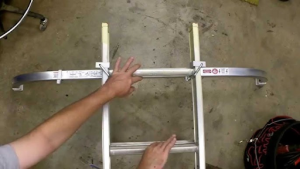
Step 2: Check the Surface
Next, inspect the surface where your stand-off will rest. Always position it against a solid and load-bearing surface such as brick, stone, or concrete. Never lean the ladder directly against gutters, window frames, or glass; they can easily crack or bend under pressure.
The rubber ends of the stand-off should make full contact with the wall or corner, creating a firm grip. If the surface is wet or dusty, wipe it clean to improve friction. On softer ground, you can use ladder mats or stabiliser feet to stop the ladder from slipping.
Step 3: Set the Ladder Angle
Getting the right angle is one of the most important steps for safety. A general rule is the 4-to-1 ratio the ladder’s base should be placed one metre away from the wall for every four metres in height. This creates roughly a 75° angle, which gives you both stability and comfort while climbing.
If the ladder is too upright, it may tip backwards; if it’s too far out, it might slide away. Stand back and check the angle visually before climbing. For extra safety, ask someone to hold the ladder base while you’re setting up.
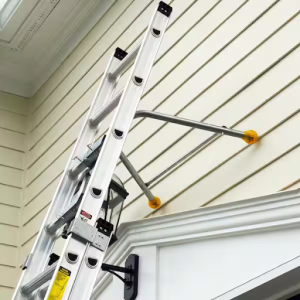
Step 4: Check for Stability
Before climbing, always do a stability test. Hold the ladder firmly and shake it slightly to ensure it doesn’t move or rock from side to side. If it shifts, the ground may be uneven reposition it until it feels completely secure.
Check that the stand-off’s rubber ends are still gripping tightly and haven’t slipped. This quick test takes only a few seconds but could prevent a serious fall. For professional jobs, it’s worth double-checking after every few moves or adjustments.
Step 5: Climb and Work Carefully
Once your ladder and stand-off are firmly in place, climb slowly and carefully. Maintain three points of contact at all times that means two feet and one hand (or two hands and one foot) on the ladder. Avoid carrying heavy tools while climbing; instead, use a tool belt or bucket hoist to lift them safely.
When working, never lean too far sideways. Keep your belt buckle or torso between the ladder rails to maintain balance. If you can’t reach something easily, it’s better to climb down and reposition the ladder instead of stretching too far.
Taking these precautions not only keeps you safe but also makes your work smoother and more efficient.
Ideal Uses for a Ladder Stand-Off
A ladder stand-off isn’t just for professionals; it’s a versatile tool that can make all kinds of height work safer and easier. Here are some of the best ways to use it:
Gutter Cleaning
Cleaning gutters can be tricky, especially when your ladder leans directly on them. A stand-off lets your ladder rest slightly away from the edge, giving you a stable position to scoop out debris or rinse the channels without putting pressure on fragile guttering. It also prevents bending or cracking the fascia boards, which saves repair costs later.
Commercial or Industrial Use
In warehouses, workshops, or construction sites, stand-offs play a key role in keeping workers safe during inspections or installations. They reduce the chance of ladders slipping on smooth walls and allow workers to reach awkward spots safely. Pairing your stand-off with other Kirmell ladder accessories, such as clamps or stabilisers, ensures a fully secure setup wherever you work.
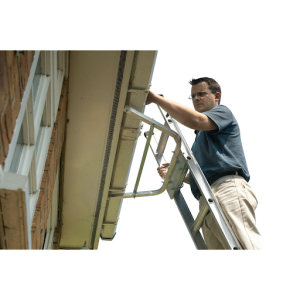
Roof Repairs
Whether you’re replacing a tile or checking for leaks, a stand-off provides the clearance and balance needed to reach the roofline safely. It helps distribute your weight evenly so you don’t damage roof tiles or dislodge edges while working. This makes it especially useful for roofers, builders, and homeowners tackling small repair jobs.
Painting or Window Cleaning
When painting high walls or cleaning upper windows, leaning the ladder against glass or wet paint can be dangerous and messy. A stand-off holds your ladder securely at a distance, giving you enough room to move your brush or cloth freely. It’s also ideal for exterior maintenance like sanding or applying sealant, as you can work without touching the surface directly.
Home Maintenance and DIY Projects
A stand-off isn’t just for professionals. Homeowners use it for everyday jobs like hanging outdoor lights, repairing eaves, trimming hedges, or installing CCTV cameras. The added space between the ladder and the wall makes it easier to handle tools and cables without feeling cramped or unbalanced.
If you often work around corners, downpipes, or uneven walls, the Kirmell Universal I-Shaped Ladder Stand-Off is a perfect fit. Its wide arms and rubber pads adapt well to tricky spaces, giving you maximum control and comfort.
Work Smarter and Safer with Kirmell Ladder Stand-Offs
When it comes to ladder safety and stability, quality matters. Kirmell ladder stand-offs are built to meet the demands of both professionals and homeowners who need reliable support while working at height. Made from durable aluminium and designed for universal compatibility, our stand-offs provide excellent grip, balance, and clearance — helping you work confidently on roofs, walls, and gutters.
At Kirmell, every product is engineered for performance and tested for safety. Whether you choose our V-Shaped or I-Shaped Ladder Stand-Off, you’ll get a sturdy, easy-to-install accessory that protects both you and the surface you’re working on.
For more details or bulk enquiries, contact our team. We’re always happy to help you choose the right product for your next job.
Conclusion
A ladder stand-off is one of the simplest ways to make roof and gutter work safer, more stable, and more efficient. By using quality tools like the Kirmell Universal V-Shaped Ladder Stand-Off, you protect yourself and the surfaces you’re working on. Pair it with the Kirmell Heavy-Duty Roof Rack Ladder Clamp for safe ladder transport and you’ll be fully equipped for every job.
Explore more reliable ladder accessories at Kirmell.co.uk and take the first step toward safer, smarter work at height.
FAQs
What is the purpose of a ladder stand-off?
Which ladder stand-off should I choose for my job?
Where can I buy a ladder stand-off from?
What type of ladder stand-off is best for roof work?
How far should my ladder be from the wall when using a stand-off?

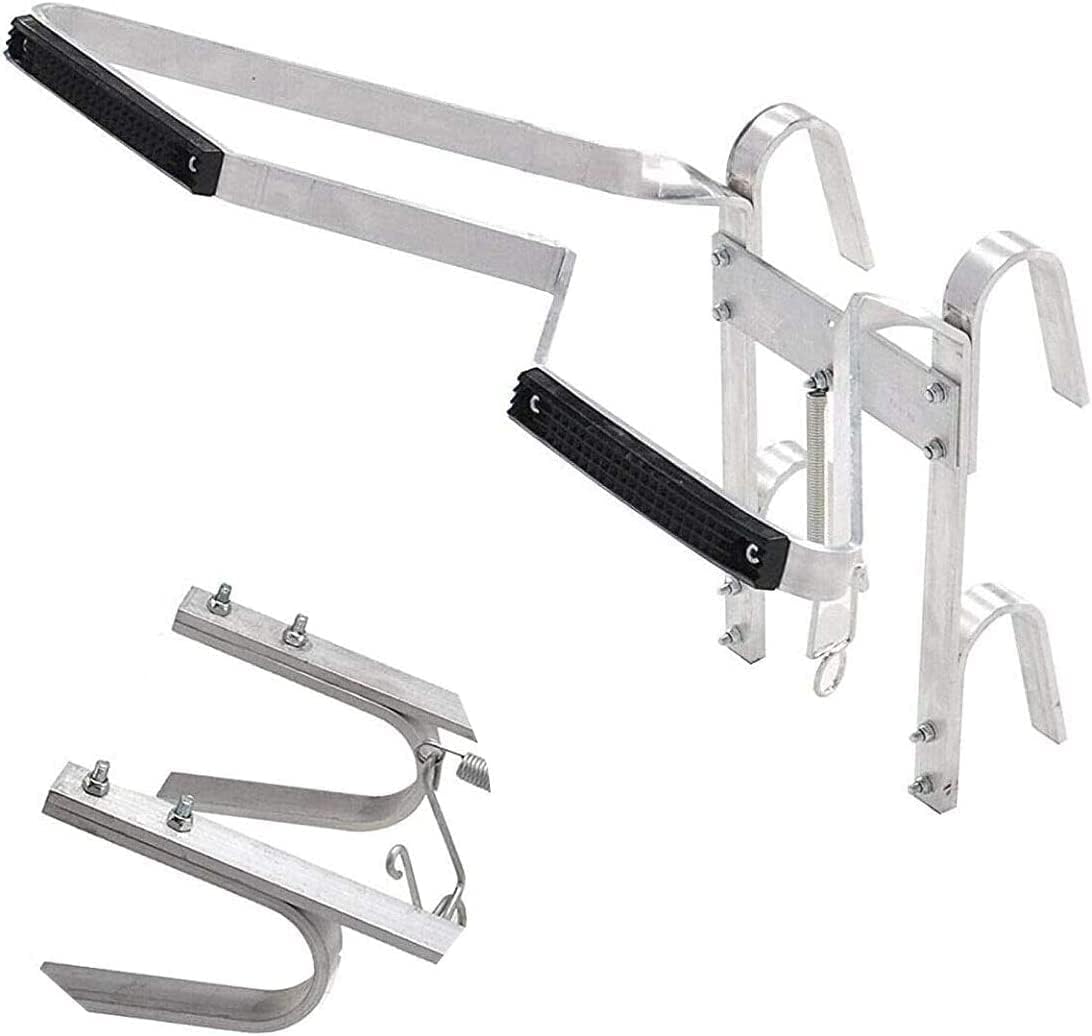
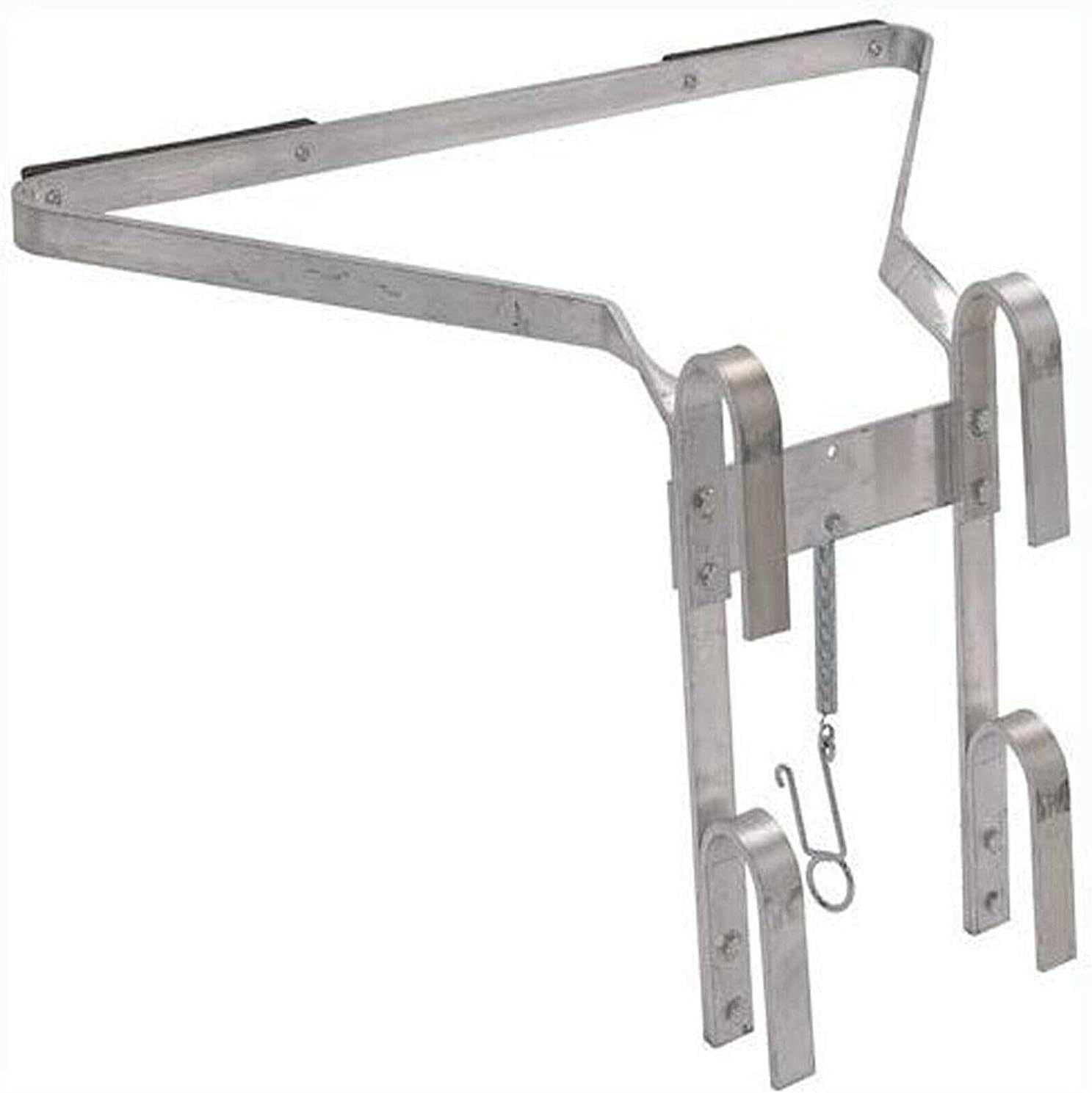



Leave a Reply
Want to join the discussion?Feel free to contribute!